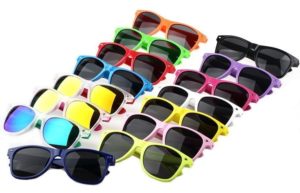Of all the newsletters and blog posts I’ve written, the ones that consistently get the greatest response are those on mindset models. This isn’t surprising—I’m sure that I like these tools for the same reasons as everybody else; they’re powerful, quick to learn and easy to use. And yet, when I talk to marketers and fellow researchers about them, I usually get a blank stare. So here’s my case for why everybody should know about mindset models.
A lot of the analytical tools marketers and researchers use are extremely complex and highly detailed. Examples of such tools include the Kano Model, the Fogg Behavior Model, the Utility Trade-off Model and the Keller Brand Equity Model. I make frequent use of all of these, and find them invaluable. However, these tools all share a drawback; they take a long time to internalize and understand, and longer still to master their application. Not so with mindset models. They can be described in a few minutes. And once you’ve had one explained, you’ll immediately know how to use it. As a result, it’s easy to build up an extensive set of these tools. I’ve identified over thirty mindset models that I use regularly. I’m such a passionate advocate for these tools that I’ll actually be giving a talk on them at the Quirks Event in London on February 11-12. In it I’ll share a variety of indispensable mindset tools.
So, what do I mean when I use the term ‘mindset?’ The formal definition I like to use is that a mindset is a system of perceptions and attitudes formed by circumstances, intentions, experiences and needs. Put more simply, a mindset is nothing more than how somebody perceives or relates to a specific situation. When you understand somebody’s mindset, you’re seeing the world from their point of view. That’s a powerful thing to be able to do, particularly if you’re struggling to understand your data, or if you want to look at your data with more rigor or a fresh set of eyes. A good metaphor for mindsets is lenses—when you look through them, everything comes into focus.
I’ve already written two posts on mindset models: maximizing/satisficing and scarcity. My post on generosity also references seven mindset tools from evolutionary psychology. You can access them again with links provided at the end of this post.
Here’s another: possibility versus feasibility. Individuals who have a possibility mindset see situations in terms of what could be, paying little regard to what’s realistic. Those with a feasibility mindset focus on whether or not something can be done, and how.
Why is this important? Because, if you’re showing new product ideas to potential buyers, their mindset will profoundly influence their interest level. For instance, I’ve noticed that early adopters of new technologies tend naturally to adopt a mindset of possibility—they get excited about the promise of a new idea, and don’t get hung up on why it might not work. So, when designing marketing communications aimed at early adopters, marketers should account for this mindset. On the other hand, later adopters tend to have a mindset of feasibility. They focus on potential problems and shortcomings. That’s why they choose to wait, letting others deal with the steep part of the learning curve, why marketers should probably not focus on selling brand new technologies to consumer segments for which feasibility is a dominant mindset, and why marketing communications aimed at them might do well to focus on a product’s proven track record. It’s also important to be aware of these mindsets when conducting ideation or co-creation sessions—participants who can’t leave behind a feasibility mindset and focus on possibility are unlikely to be able to contribute. So, if you’re recruiting consumers for such an event, a few attitudinal screening questions can greatly increase your chances of success. What’s more, it’s a good idea to include some exercises at the beginning of the session to foster possibility thinking.
Making use of mindset models is easy—you just need to get into the habit of asking yourself what role mindsets are playing in the perceptions, attitudes and behaviors observed in the situation at hand. If you’re listening to research participants and having difficulty understanding their opinions, think about what their mindset might be. Remember that every mindset has its own logic, and if you can understand what the operating mindset is, people’s points of view will start to make more sense. I have a checklist of questions I routinely ask myself to help focus on mindsets:
-
What mindsets are evident?
-
How are they shaping perceptions?
-
What behaviors are they driving?
-
What can they tell us about segments?
-
What are the implications for branding and tactics?
Take this list and refer to it when conducting research, reviewing research data, developing brand strategies or tactics, and when arguing with your significant other. After a while, you’ll find you’re in the habit and won’t even need to think about it. Then you’ll be a Master of Mindsets!
Previous Mindset Blog Post Links:
Scarcity: https://thomasmrich.com/2019/09/25/why-being-poor-is-so-expensive/
Maximizing & Satisficing: https://thomasmrich.com/2019/08/21/when-good-enough-is-good-enough-2/
Evolutionary Psychology: https://thomasmrich.com/2019/10/28/on-the-benefits-of-generosity/
Morality: https://thomasmrich.com/2020/10/09/the-elephant-in-the-room/
Loneliness: https://thomasmrich.com/2020/07/13/remember-eleanor-rigby/

